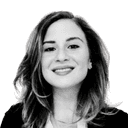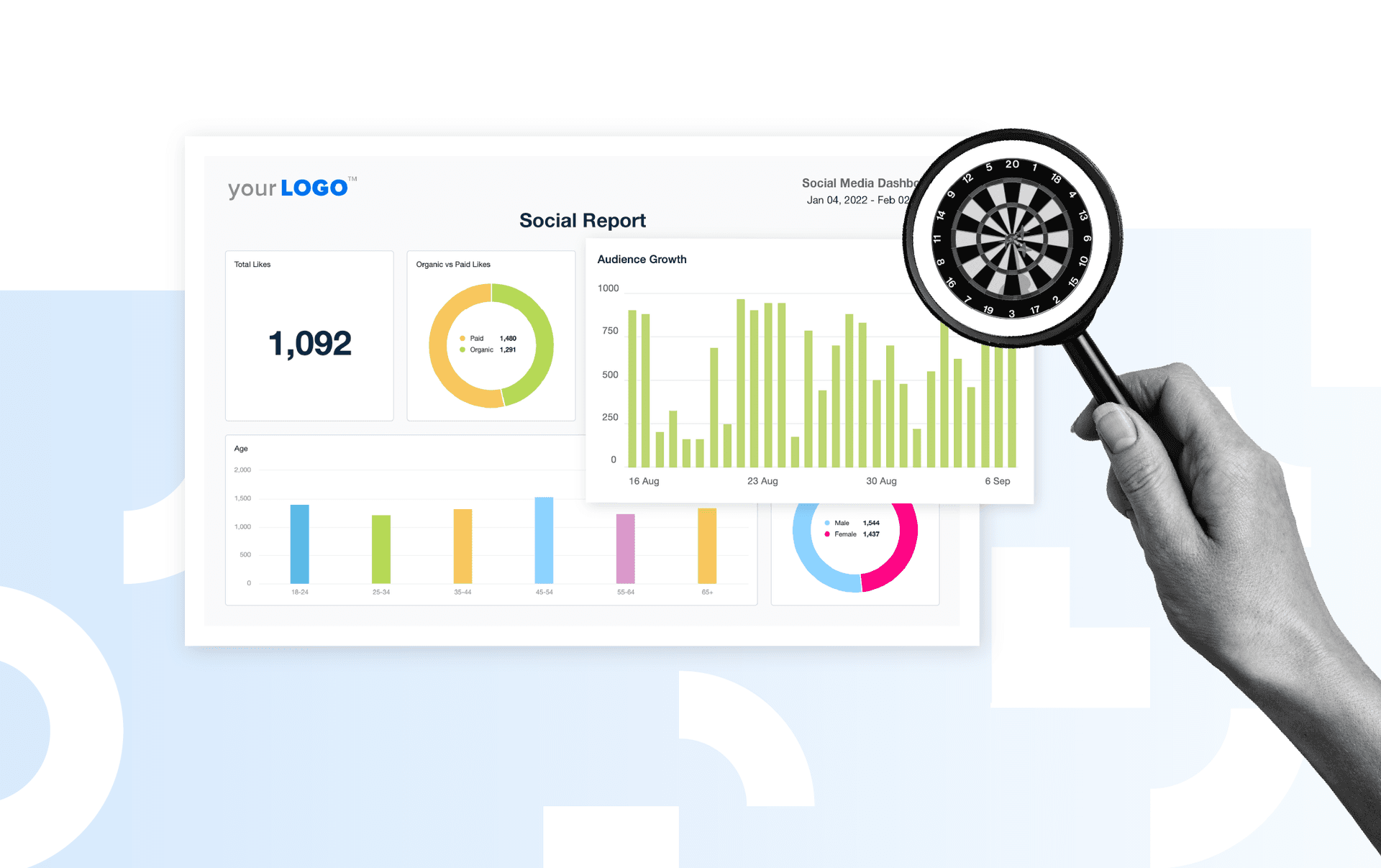Table of Contents
Table of Contents
- What Is a Winning Social Media Proposal?
- When Is the Best Time To Send a Social Media Proposal
- What You Need To Know Before Creating a Social Media Marketing Proposal
- 13 Things To Include in Your Agency’s Social Media Proposal Template
- Creating an Email That Gets Your Social Media Proposal Read
- Say 'I Do' to a Social Media Proposal Template
7,000+ agencies have ditched manual reports. You can too.
Free 14-Day TrialQUICK SUMMARY:
A social media proposal is a comprehensive document prepared by marketers or social media specialists outlining a proposed strategy for a client's social media presence. It's a roadmap for achieving marketing goals through social media, enhancing engagement, brand awareness, and conversions. This guide provides a step-by-step approach to writing an effective social media marketing proposal–plus a proposal template–to win more clients.
Social media management isn't a walk in the park. Imagine the journey from prospecting to closing a new social media client as a courtship. You're not just pitching your social media marketing services; you're crafting a love letter in the form of a compelling social media proposal.
A winning social media proposal isn't just a random document; it's your golden ticket to winning the client's heart. Now imagine having more of these golden tickets to grow your agency by getting more clients. That’s where the right proposal template comes in.
This guide will walk you through the essential elements to include in your social media proposal template to win over new clients confidently and at scale. We'll also show you how to use a social media dashboard and an automated social media reporting template to keep the tempo up and generate new business.
Ready to dance with social media proposals?
What Is a Winning Social Media Proposal?
After you’ve brought a potential client into your agency’s sales funnel and gone through a thorough discovery session, a winning social media proposal is your chance to outline how your marketing agency’s skills, experience, and strategy will benefit your prospective customer’s business.
Think of your discovery session with a client as a casual first date, where you're getting to know each other and exploring potential synergies. It's a conversation centered around your prospect's business goals, filled with possibilities and excitement. But then comes the social media proposal–your grand gesture.
Social media proposals are where you lay out your intentions, your strategy, and the milestones for your blossoming agency-client relationship. It's your roadmap to success, your promise of commitment to the project. (Check out our free template below!)
When Is the Best Time To Send a Social Media Proposal
A well-timed social media marketing proposal is the spark that ignites interest in a new client or rekindles the flame with an existing one.
Here are the four perfect moments to present your social media proposal:
1. Prospecting
This is your first impression, your chance to show a potential client that you've thought about how your social media marketing agency can help them. A streamlined social media proposal kickstarts the conversation and sets your agency apart.
In the early stages of running a social media marketing agency, many marketers will opt for using a Google Doc or similar free tool for creating the document. But if you want to stay ahead of industry trends and put a ring on it, your agency needs to upgrade its proposals with the right software. This will not only make the creation process smoother but also allow you to white label the proposal with your agency's branding.
Like an SEO proposal, which identifies issues that are hampering prospective customers’ organic results, a social media prospecting proposal is all about looking at a client’s current social presence and providing recommendations on how your agency can drive more business.
A Proposal Report Template that is easily adapted to fit your needs, saves time while still providing value. It's a clear signal of your commitment to quality and professionalism, showing your clients that you're in it for the long haul.
Agency Tip: Send the proposal as soon as you know what your prospective client wants or needs–ideally, having it ready after your discovery session gives you the chance to defeat their sales objections.

Win new clients by streamlining your proposal process. Try out this exact proposal template for 14 days when you sign up for your free trial with AgencyAnalytics.
2. Responding to an Inquiry
Whether it's a formal Request for Proposal (RFP) or a casual inquiry about your social media services, responding with a social media marketing proposal makes your agency shine brighter than the rest. The depth of your proposal will depend on the information you have and the potential value of the client.
Agency Tip: If you’re responding to a request, the rule of thumb is to respond within 24 business hours and no later than four working days. And be sure to send it during local working business hours in your prospect’s local time.
3. Closing
After initial conversations with a potential client, a well-crafted social media proposal can be the final nudge they need to choose you. For example, let’s say you’ve completed the discovery session and had several subsequent chats about the client’s goals, but the client still hasn’t signed on the dotted line. Sending them a personalized, well-researched, white labeled social media proposal is an excellent way to demonstrate the specific ways that your agency plans to add value to the client’s social media strategy, in turn spurring them to action.
Read more: 6-Step Client Onboarding Checklist for Agencies
4. Upselling Your Social Media Management Services
Upselling is an opportunity to share with existing clients the exciting social media services your marketing agency offers that they haven’t yet explored, making it the perfect time to share a social media proposal. The benefit of approaching an existing client is the ability to access their most important social media key performance indicators so your proposal is data driven, based on historical performance.
With existing clients, use social media reporting software to highlight the need for additional social media management services. A well-crafted proposal helps you expand billables with an existing client.
In each of these stages, having a free social media proposal template handy scales your efforts by clearly outlining the key information needed.
What You Need To Know Before Creating a Social Media Marketing Proposal
You wouldn't want to propose without knowing everything about your partner, their secrets, the good, the bad, and the ugly. So before writing your proposal, it's crucial to know your client inside out and do your due diligence.
Here's a step-by-step guide to help your social media marketing agency conduct thorough research.
Gathering Initial Insights
Before you start writing your proposal, a social media marketer should take the time to understand your client's needs, goals, and current social media presence. This helps you tailor the best social media proposals to address their specific requirements and business objectives.
The best advice would be to ask a lot of questions. I cannot emphasize enough how critical it is to know all you can about your client, their competition, and their target market. All of these will help greatly in your success.
JR Griggs, President, Red Wall Marketing
Although an audit of their current social strategy is a great place to start, the type of R&D needed to develop a deep understanding of prospective customers’ needs will be hard to find online, so you’ll need to get it straight from the source. Set up a Zoom meeting with the potential client and address the following questions:
What are their business goals?
What are their social media goals? (these last two will go hand in hand and help you highlight your ROI in a killer social media report once you land them)
What is their proposed timeline to reach these goals?
What challenges are they currently facing, and how long have they been facing them?
What was done in the past to address these challenges?
What does their current social media use look like?
What’s their budget?
If you’re really scaling and don’t have time for a call, consider sending out a standard intake form for your potential clients to fill out. Or, if your agency has received an RFP, absorb everything in the document and try to answer the questions above yourself. This will also help you understand the scope of the project and whether it is realistic within the budget.
Pinpointing Your Client's Target Audience
This is akin to “meeting the in-laws.” Ask your prospective client about their audience.
If they’re a bigger company, the client might have already done this research. But it’s always a good idea to do a social media audit of your own to see if there’s a discrepancy between their goals and their current social media audience or messaging. It will also help you form your social media strategy and even select the right channels to focus on.
Consider:
Demographics: Age, gender, occupation, whether they are single or have children
Geographic location data: What country? Are they in the city or in a suburb? What language do they speak?
Psychographics: What do they believe in? What are their hobbies?
Behavioral patterns: What are their consumer behaviors and buying patterns?
Once you have all your data on their audience, use it to create different buyer personas for your agency’s proposal. This will be the voice of your potential client's customers and inform how you speak to them in all your marketing collateral.
Ensure that these personas match the overall social media goals and that the connection is clear as a bell to your potential clients.
Understand the Playing Field With Competitive Analysis
Your social media strategy proposal will also prove that you know your potential clients’ competitors–sometimes better than they do–from both a SERP and social media channel standpoint.
Who are your prospective clients’ key competitors? Are they competing in the same niche or targeting the same audience? What is their share of voice? Choose around five of the stronger competitors to benchmark against.
Let’s take a step-by-step look at gathering intel on the prospect’s competitors.
1. Conduct a Search Engine Competitor Analysis
From a SERP standpoint, use Google Adwords Keyword Planner or other keyword research tools to look at:
Competitive keywords that are attracting your prospective client’s target audience: Start from your prospective client’s website. Do they own a dog wash clinic in San Francisco? Get a list of relevant keywords and the average monthly search volume to get a sense of the competition.

Who is ranking for those keywords with a simple Google search? Choose from the top 10 keywords that are most relevant to your prospective client’s business and type them into Google. See what ads pop up, as that’s where the competitors are putting their ad dollars to rank above the rest.

2. Conduct a Social Media Competitor Analysis
From a social media standpoint, your marketing agency has access to social listening tools like Twitter Advanced Search and Hootsuite to monitor competitors’ activities across social media channels.
Find out:
Who are their top five main competitors on social media?
Are they the same as their SERP competitors?
Which platforms and features do their competitors use?
How well is their social media strategy working for them?
What is their following?
How many times do they post?
What is their engagement rate?
Who are their top followers?
What hashtags do they use the most? How many?
Are there types of content their competitors create that your agency would like to replicate?
If you find pages associated with your prospective client’s industry (aka Dog washing), then they can be added to your growing competition list.
Your list is likely very long by now, so it’s important to narrow it down to the brands that are closest to your prospective client’s target audience and niche.
Brand keyword monitoring: Do social networks use the same keywords? Use social media channels to search for the same keywords a user would normally type into Google.
For Facebook, for instance, see which Facebook Business Pages pop up:
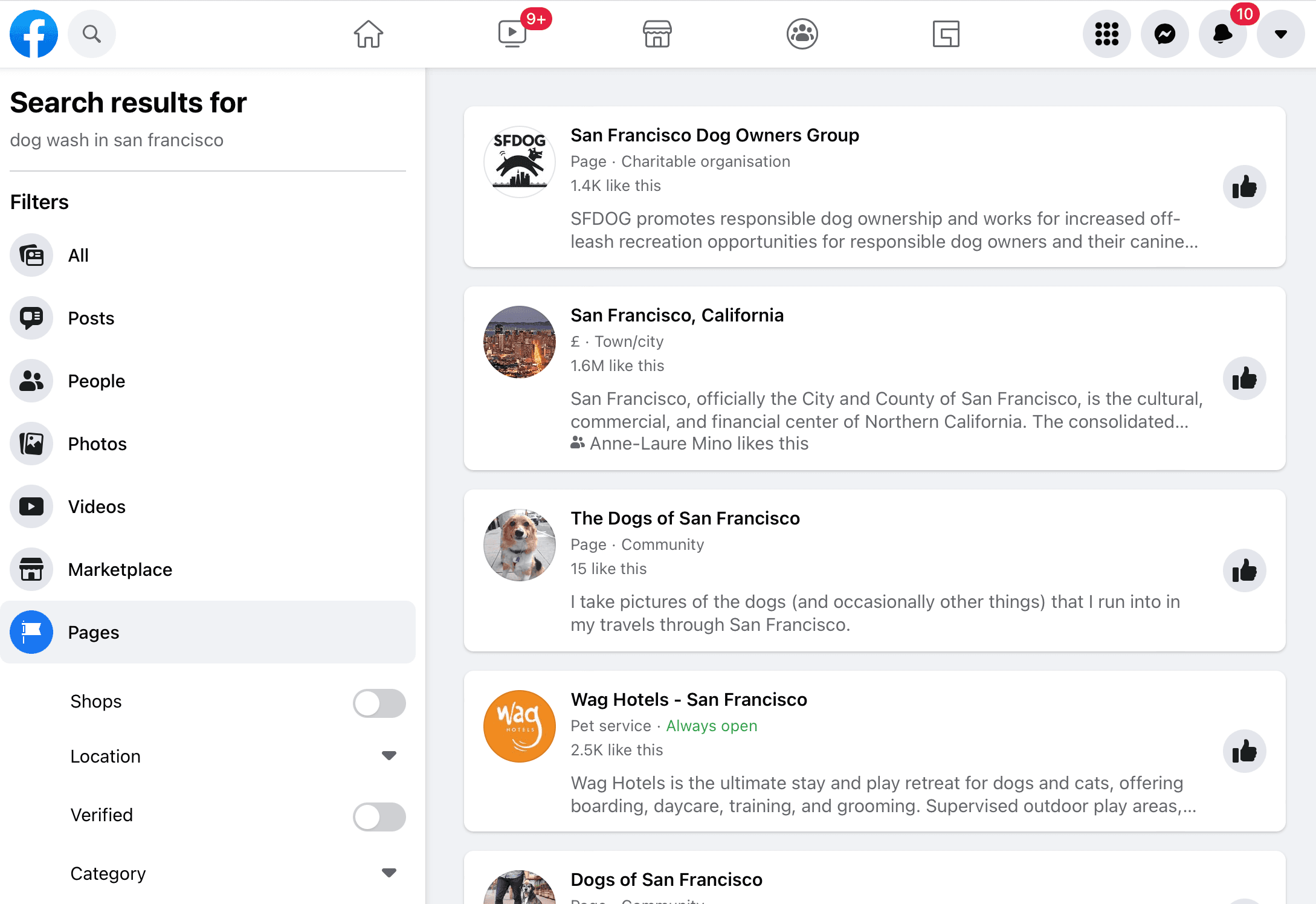
Who is the target audience following on socials? Two great tools to see who your prospective client’s audience is following are Twitter and Facebook Audience Insights. Why? If the brands they follow are similar to your prospective client, then they are also potential competitors.
Agency Tip: A rule of thumb is to benchmark against 3-5 brands. Then do your classic SWOT analysis on those brands if you’d like to set more specific benchmarks that you will later propose to meet or exceed in the next parts of your proposal.
13 Things To Include in Your Agency’s Social Media Proposal Template
Once your agency has completed the research phase and has strategized, it’s time to put together your social media proposal.
Let’s look at the key components of a successful social media proposal plan.
1. Executive Summary
Here you need to detail how you intend to achieve the client's social media goals, the platforms you'll use, the type of content you'll create, and how you'll engage with the audience. This is an essential part of your proposal and needs to be your tightest piece of writing, as it’ll condense your agency’s value and expertise in under one page.
The purpose is to provide a “Tl;dr” to define the strategy and outline your plan of action by showcasing just how your agency will bring in more ROI with information such as:
How you will manage their social channels to grow their brand presence and track metrics such as follower growth
The marketing activities your agency will spearhead to bring more leads through their social media accounts
Their project timeline and key project milestones
Think of it like this: busy executives will look at this and understand the gist of your agency’s value to their bottom line to help them understand–right away–if they should continue reading the proposal, so make it all about their success and how you’ll get them there.
Agency Tip: While this is at the beginning of your social media proposal template, you may want to complete it last to filter through your most important talking points once you have all the finer details written out.
2. Introduction
This is where you boast about your agency, what you stand for, and why you’re the right choice.
Include:
A Brief Overview of Your Agency: This includes your company name, your agency’s core function, and the industry/ies your agency primarily serves.
Your Agency’s Breadth: How many clients have you worked with in the past, and what type? Let them know about your top clients from the past – including big brands and little ones.
Relevant Experience: Highlight your agency’s experience as it relates to your current clients so they know you’ve done this before.
Vision: Let them know your agency’s direction.
Mission Statement: What is your organization about?
People: Who are the team members that will be involved? Focus on the key team members or client-facing ones if your social media agency is large.
Photo: This will help humanize the proposal
The “Basics”: Include the detailed contact information of key account managers involved, and what an expected reply date would be should questions arise.
3. Your Prospective Clients’ Needs and Social Media Goals
Show your prospective client that you get them by repeating their business’ overall needs with the same language they used in their discovery session or RFP (request for proposal).
Begin by highlighting their pain points, setting the stage to later align your agency’s proposed solutions back to their business and social media goals.
This section should be as clear as possible and be heavily research-based. Remind your prospective client of their problem or need and state the results your agency expects from your social media marketing efforts.
Before setting clear goals, Daniel Noakes, Founder of UClimb says it’s important to “find out the why” of their client and decide where they are likely to succeed online. From there, Noakes’ team identifies what metrics will lead directly to that success.
4. Social Media Audit
Before defining the client’s social media goals, show your prospect what their current state of social media marketing looks like.
A thorough social media audit will set the stage for a well-crafted social media strategy proposal. Clearly outline how you will reach the client's social media goals presented and showcase their social presence in more detail to bring everyone on the same page:
What is working for them and what’s not?
How many ads are they running? (Tip: Facebook Ad Library shows you all active ads that pages are running).
How are their organic and paid posts performing?
Do this for each of their social media platforms.

Instantly create a social media audit for your clients with a live social media dashboard template that connects to all your clients’ social media marketing channels. Try this template free for 14 days with AgencyAnalytics!
5. SMART Social Media Goals
After auditing the prospect's current social presence, now is your opportunity to showcase how your social media marketing team plans to reach your potential client’s target. Keep these social media goals SMART: specific, measurable, attainable, realistic, and timely.
Setting realistic, achievable social media goals enhances client trust and avoids client churn down the line. This isn’t the time to throw fluffy numbers at them to boost their ego, this is about how your marketing agency will help the client achieve their goals.
Any metrics that can't be in some way connected to the deep desires of the client are vanity metrics. Actionable metrics are directly related to the results the client really wants, which is often different to their stated desires.
Daniel Noakes, Founder of UClimb
Even though the client may say they want to build a larger social following, very often the client’s objectives won’t be to simply grow their online following, but rather to increase leads and sales. To convince them to choose your agency’s social media management services, you need to tie in social media metrics with numbers like revenue, conversions, and sales.
Agency Tip: Writing captions that are catchy will help you avoid using marketing jargon. Communicate with visuals, simple terms, and be ready to clarify where need be.
State 3-5 key objectives. Each key objective should specify the platform(s), the metric(s), and an end date. It needs to be clear when to measure the goal and what the metric is for success.
When your agency demonstrates that it has established a goal-tracking method, it is telling clients that you are capable of delivering proven results.
Show your clients how goal-oriented your agency is by sharing the robust social media reporting platform it uses.
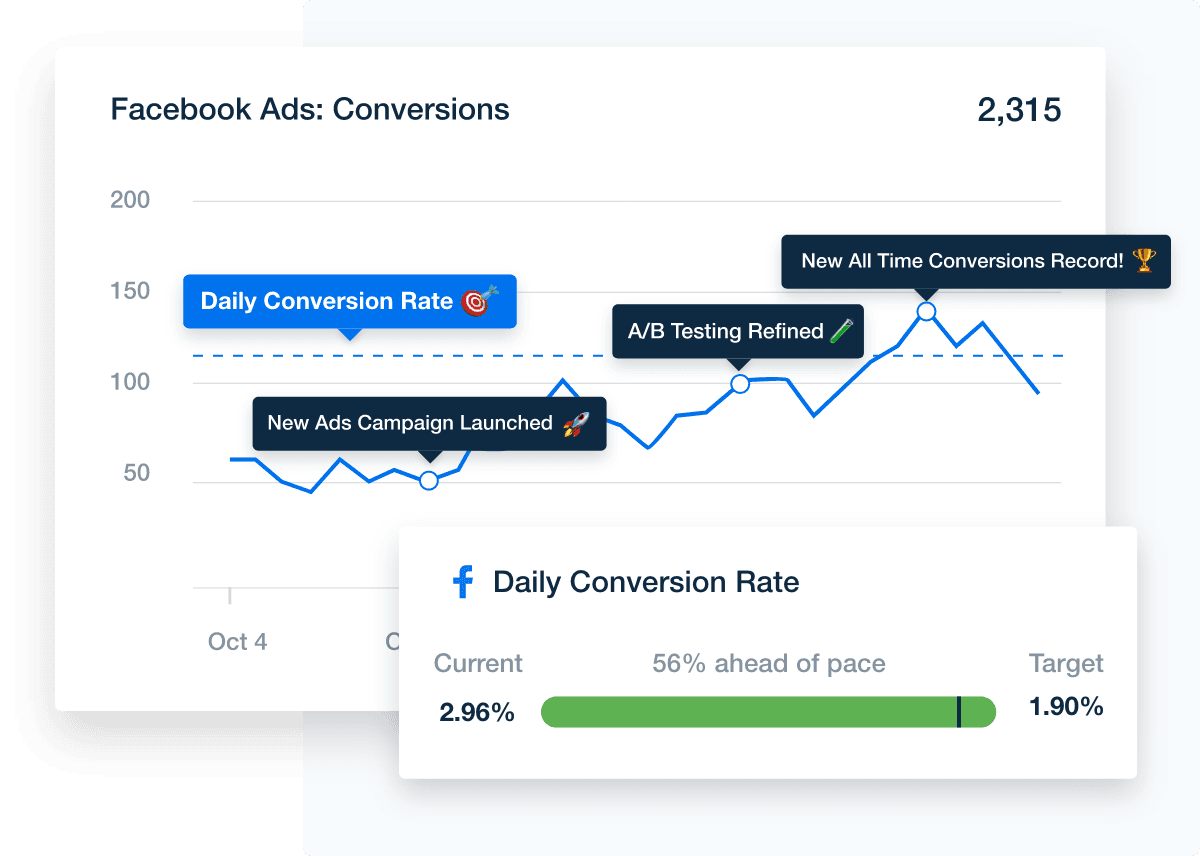
Automatically track progress against key objectives for each client and easily report your success with AgencyAnalytics. Start your free 14-day trial today.
6. Social Media Strategy
The next step is to use your expertise to craft a brief social media strategy.
During the business proposal process, the social media strategy doesn’t need to be exhaustive, as you'll likely need additional information after signing a contract. That said, the more specific and actionable you can make the strategy, the better.
A few key pieces of information to include in the strategy section include:
The context mix you plan to post
How you plan to create the content
Recommended posting schedule
The audience persona you’ll be targeting
Brand voice and tone
7. How You Will Measure the Project’s Success
Unlike a marriage proposal, in which success can be defined by a simple yes or no reply, the success of social media campaigns is complex and nuanced. To measure it, your agency must take several factors into account.
One way to demonstrate how you’ll be measuring the ROI of the client’s social media marketing is to simply show them an example of a previous social media report you’ve sent to clients—of course, removing any sensitive information.
For example, in our article on key metrics to track the ROI of social media marketing, you see how to assign an exact monetary value to social platforms with our Google Analytics integration:

Using customizable templates, including the Facebook report template, Instagram report template, or simply combining all social media into one report template, it’s easy to convey the return on your client's investment for your agency’s social media management services. These templates are built to provide clarity on all the important OKRs and KPIs your potential client cares about.
Most clients see clicks, likes and email opens as success and including these in reports can create an expectation of higher conversions and a bigger ROI. However these vanity metrics are hollow digits that contribute little substance to proving your marketing is making money.
Showing that your creative work is backed and informed by data will further solidify your agency’s candidature for top social media marketing services. Demonstrate your agency’s commitment to measuring success with an automated social media reporting tool.
Scope of Work, Deliverables, and Budget
After providing clear metrics to measure success, a winning social media proposal should provide the scope of work, timeline, and deliverables for the project.
For example, a few of the sections included in SproutSocial’s article on social media proposals include:
Posting Schedule: Include the number of posts each week and which platforms you’ll be using.
Content Creation and Curation: Include how and when content will be created and the timeline for editorial approval.
Analytics and Reporting: Highlight how often you’ll be sending social media analytics and reporting to clients.
Being specific about the timeline and deliverables is a key component of managing client expectations and increasing client retention before starting the project. As highlighted in our guide to client retention strategies:
Client retention actually starts during the sales process—the setting of expectations and timelines starts with the social media pitch, is cemented during client onboarding, and is realized during a client engagement.
Clearly lay out your expectations around the budget, time, and resources required to complete the project.
Example | Instagram Campaigns | Deadline |
|---|---|---|
Creative content | Create images and videos for IG posts | May 1 |
Create copy | Write copy text for campaign | May 1 |
Launch campaign | Deadline for campaign launch | May 9 |
Monitor campaign | Monitor results of the campaign and report on them | Custom - access to live dashboards. Reports are sent out bi-monthly or monthly. |
Revise campaign and test | Review results and test | Ongoing |
You can also create a separate table highlighting who will be responsible for the different activities.
Example | When | Owner |
|---|---|---|
Instagram Campaign | Month 1 | Community Manager |
Content Creation | Month 2 | Content Specialist |
Social Media Monitoring | Month 3 | Social Media Specialist |
Next, you will need to break down your prospective client’s budget. You may choose to go into more detail or keep it at project milestones and payment terms and deadlines.
Agency Tip: Don’t shy away from discussing payment deadlines. Ask your potential client directly what sort of payment schedule they prefer, so that you can cover the T of your SMART goals: the timing for each milestone and payment date.
Read More: How Much Do Marketing Agencies Charge for Social Media Management?
8. Case Studies & Client Testimonials
At this point in the social media marketing proposal, you’ve demonstrated that you understand the prospect’s business and goals and have a strategy to achieve them. Now it’s time to humble brag. To close the deal, you’ll want to share examples of past client success.
Ideally, a case study should include metrics to back up the success of the project and quotes from the client. For example, in our case studies, we typically include exactly how much the client saved by automating their social media reporting both in terms of dollars and manual labor hours.

9. Terms of Agreement
The terms of agreement section in the social media proposal template is where you outline the specifics of the project. Typically, this will include the following details:
Fees: Highlight the pricing structure you use, such as whether it’s a project-based, hourly, retainer, or a mix. (Check out our guide to creating your agency pricing model!)
Payment terms: Specify when you send invoices, the payment terms, and so on.
Termination: It’s best practice to also include the details of how either party can terminate the agreement.
10. Provide the Next Steps With a Compelling Call-To-Action
Finally, just as you would plan your future together in a relationship, guide the client on what comes next. This could include the contract signing, the onboarding process, or the timeline for the project. This gives the client a clear understanding of what to expect moving forward.

Agency Tip: Increase the likelihood of closing the deal in a timely manner by including an expiration date for the social media proposal.
Highlight the next steps so that the prospect is crystal clear about what actions need to be taken.
11. Appendix
This is the part in your social media proposal template where you add references and supporting documentation that you alluded to but didn’t fully include for the sake of keeping your social media proposal as short as possible. These might be:
Research sources and evidence
Detailed ROI and budget calculations
Experience with previous clients
Company information
Creating an Email That Gets Your Social Media Proposal Read
Once you’re confident in your document, you’ve solidified your marketing plans, and completed the necessary review meetings about this prospect (especially if they’re a big fish), your well-crafted social media proposal request is ready to send. This will most likely be as an email attachment in PDF format.
Establish a personal relationship with your future client using their first name, as well as informal words like you and yours to grab their attention. Keep it short and sweet.
For instance:
Hi Marc,
We’re delighted to show you how our agency will help you grow your business and social media presence to land more leads with our social media services.
As you’ll see, this proposal outlines exactly how we will deliver growth-driven results for your business with our proven social media strategies and expertise.
Once you’ve reviewed this document, let us know if you have any questions. The next steps after the review are to select your package and finalize the terms of the contract if you’d like to work with us.
Of course, make sure the “next step” you outline is relevant to where the client is in their decision-making journey. In the example above, the next step is to select the appropriate package for their business, but another next step could be to book a call with a business development rep.
Say 'I Do' to a Social Media Proposal Template
Growing social media marketing agencies need to nurture and invest in their growth. You can't just sit back and wait for clients to come knocking at your door. You need to put yourself out there, seek new opportunities, and make your intentions known.
An effective social media proposal allows your agency to follow up promptly after a discovery session, expressing your interest and commitment. More importantly, it helps you stand out in a sea of suitors, all vying for your potential client's attention.
To make sure your social media proposal is the one that sweeps them off their feet, work from a predefined and customizable social media proposal template. Not only will it make your social media pitch shine, but it streamlines your team’s client acquisition efforts and helps drive a lead-generation mentality.
Additionally, a social media proposal template significantly reduces friction and increase your response time to incoming requests. Whether in a PDF, Powerpoint, or other formats, it’s a scalable part of an agency’s growth plans.
Our social media proposal template will help get you there.
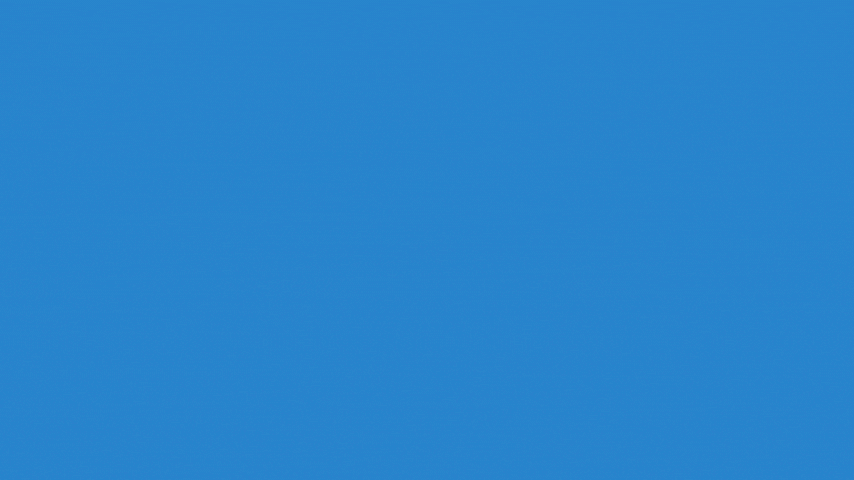
Add clarity to your marketing decisions with a social media proposal template. Save time and create and schedule reports in minutes. Start your free 14-day trial with AgencyAnalytics and use our free template to win new clients today!
After finding AgencyAnalytics, not only did we save a significant amount in billable hours each month, but it also helped us maintain strong relationships and retain clients over the long run.
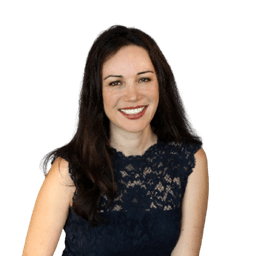


Written by
Melody Sinclair-Brooks brings nearly a decade of experience in marketing in the tech industry. Specializing in B2B messaging for startups and SaaS, she crafts campaigns that cut through the noise, leveraging customer insights and multichannel strategies for tangible growth.
Read more posts by Melody Sinclair-BrooksSee how 7,000+ marketing agencies help clients win
Free 14-day trial. No credit card required.


